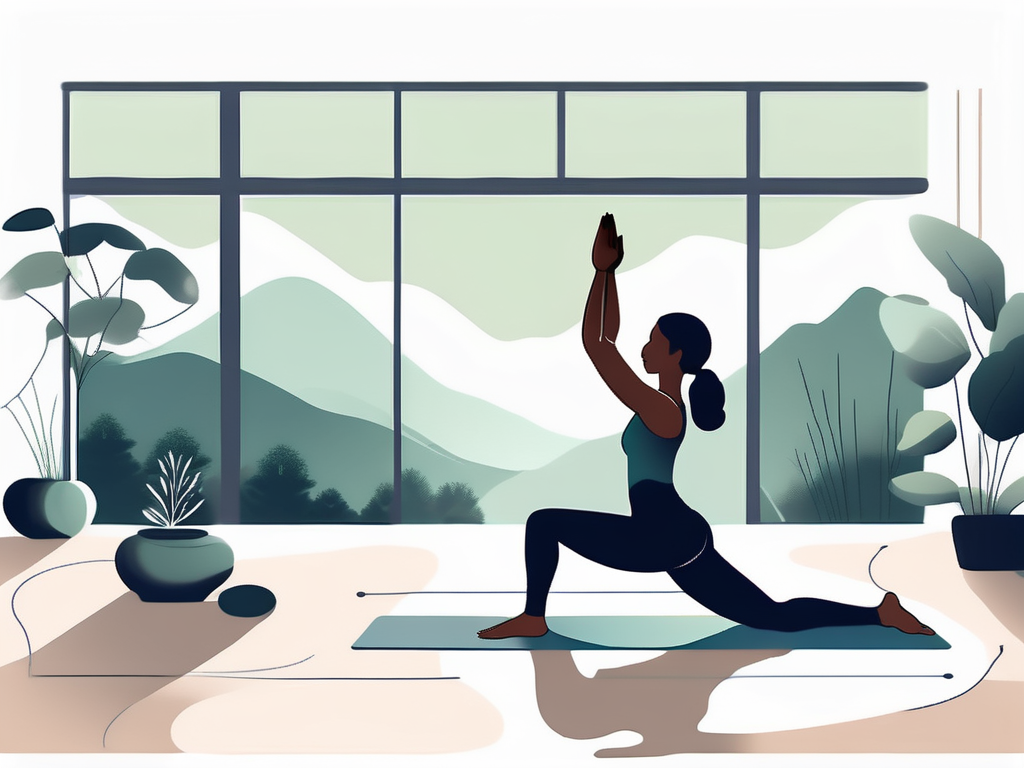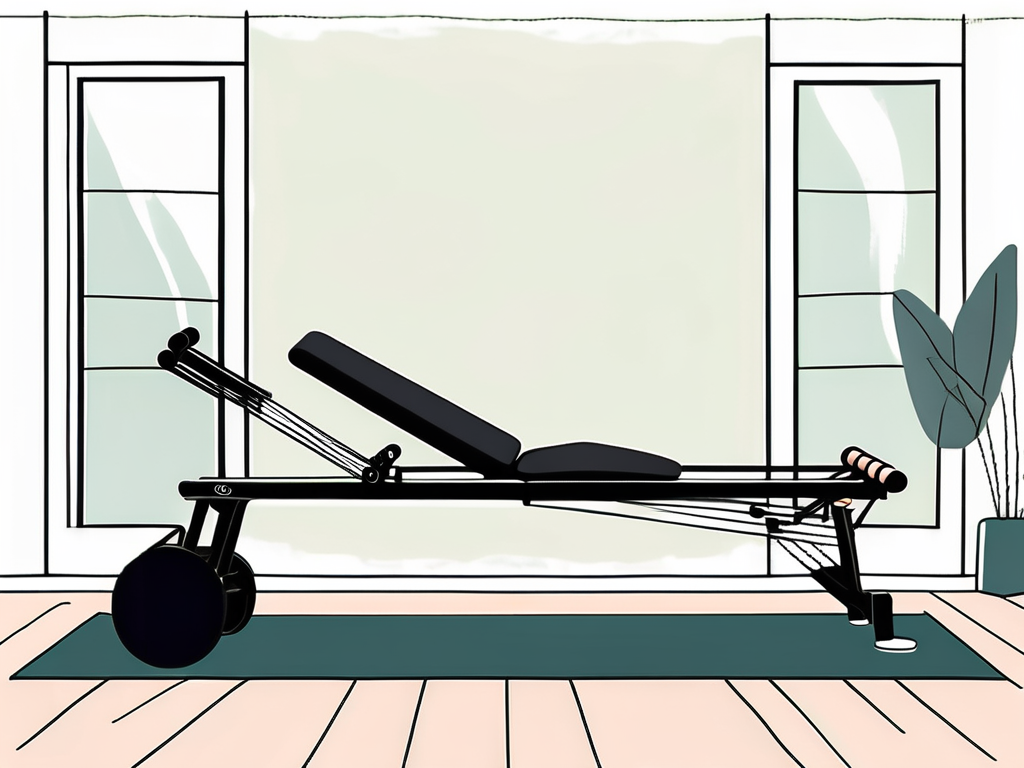In the realm of mind-body exercises, both Pilates and Yoga have gained popularity for their numerous health benefits and unique approaches. While these two practices share some similarities, they remain distinct in their origins, principles, and techniques. In this article, we will delve into the rich history, core principles, and benefits of both Pilates and Yoga, exploring their similarities and differences. By understanding the essence of each discipline, you can make an informed decision about which practice aligns best with your personal goals and preferences.
Understanding Pilates
Pilates, developed by Joseph Pilates in the early 20th century, was originally named "Contrology." Born out of Joseph's desire to help rehabilitate soldiers during World War I, Pilates focuses on building strength, flexibility, and control through a series of precise movements. The practice emphasizes the deep muscles of the core, aiming to improve posture, balance, and overall body awareness.

The Origin of Pilates
Joseph Pilates, a German-born fitness enthusiast, began developing his method while interned as a prisoner of war. Drawing inspiration from various exercise disciplines like yoga and gymnastics, he crafted a system that combined resistance training with mindfulness. Joseph's approach quickly gained recognition among dancers and athletes for its ability to enhance performance and prevent injuries.
Core Principles of Pilates
At the core of Pilates lies a set of fundamental principles guiding its practice. These include concentration, control, centering, precision, breath, and flow. Concentration enables practitioners to fully engage their minds in every movement, fostering mind-body awareness. Control emphasizes the need for precise and controlled movements, rather than relying on momentum. Centering focuses on engaging and strengthening the deep core muscles, fostering stability and balance. Precision encourages practitioners to perform each exercise with accuracy, thereby maximizing benefits. The concept of breath emphasizes the importance of controlled breathing to facilitate movement and enhance mindfulness. Finally, the principle of flow promotes smooth transitions between exercises, creating a harmonious and uninterrupted practice.
Benefits of Pilates
Pilates offers a wide array of benefits that extend beyond physical fitness. By improving core strength and stability, practicing Pilates can enhance posture and relieve back pain. The emphasis on controlled movements and breath promotes mindfulness, reducing stress and fostering mental clarity. Regular Pilates practice also enhances flexibility, builds lean muscle, and improves overall body strength. In addition, the low-impact nature of Pilates makes it suitable for people of all ages and fitness levels.
Moreover, Pilates can be a valuable tool for rehabilitation and injury prevention. The focus on core strength and stability helps to support and protect the spine, reducing the risk of back injuries. The controlled movements and precise alignment in Pilates exercises also promote proper joint mechanics, which can help prevent joint pain and dysfunction. Additionally, the emphasis on breath and mindfulness can aid in the recovery process by reducing stress and promoting a sense of calm and relaxation.
Furthermore, Pilates can be a great complement to other forms of exercise and physical activities. The improved core strength and stability gained from Pilates can enhance performance in sports such as golf, tennis, and swimming. The increased body awareness and control developed through Pilates can also benefit activities like dancing and martial arts, where precise movements and coordination are essential. By incorporating Pilates into a well-rounded fitness routine, individuals can experience improved overall physical performance and reduce the risk of injuries.
Understanding Yoga
Yoga, originating in ancient India, is a holistic practice that incorporates physical postures, breath control, meditation, and ethical principles. Rooted in the ancient Indian philosophy, Yoga seeks to unite the body, mind, and spirit, fostering physical, mental, and emotional well-being.

The History of Yoga
Yoga has a rich history that dates back thousands of years. It is believed to have been developed around 5,000 years ago in the Indus Valley Civilization. Over time, Yoga evolved into a diverse range of practices and philosophies, with various schools and styles emerging. The Yoga Sutras of Patanjali, composed around 200 CE, serve as a foundational text, providing guidance on the practice and philosophy of Yoga.
The ancient practice of Yoga has been passed down through generations, preserving its essence and wisdom. From its humble beginnings in the Indus Valley Civilization, Yoga spread across ancient India, finding its way into the hearts and minds of people seeking a deeper understanding of themselves and the world around them. As Yoga continued to evolve, it became intertwined with different cultural and spiritual traditions, adapting and assimilating new ideas and practices along the way.
Key Concepts in Yoga
Central to the practice of Yoga are several key concepts. Asanas, or physical postures, are the most widely recognized aspect of Yoga. These postures help strengthen and stretch the body, promoting physical health and flexibility. Pranayama, the practice of breath control, focuses on using specific breathing techniques to enhance energy flow and achieve mental clarity. Meditation plays a crucial role in Yoga, serving as a tool for cultivating mindfulness, inner peace, and self-realization. Lastly, Yoga emphasizes ethical principles known as the Yamas and Niyamas, which guide practitioners in living a virtuous and ethical life.
Asanas, the physical postures of Yoga, are not just about achieving impressive poses or contorting the body. They are a means to connect with the body, to listen to its needs and limitations, and to find balance and harmony within. Each asana has its own unique benefits, targeting different muscle groups and promoting specific physical and mental states. From the grounding stability of Tadasana (Mountain Pose) to the invigorating strength of Virabhadrasana (Warrior Pose), each asana offers a gateway to explore the body's potential and cultivate a deeper sense of self-awareness.
Benefits of Yoga
Yoga offers a myriad of benefits that extend beyond the physical realm. Regular practice helps improve strength, flexibility, and balance, while also promoting relaxation and stress reduction. The practice of Yoga enhances body awareness, fostering a deeper connection between the mind and body. Additionally, Yoga encourages self-reflection and personal growth, cultivating a sense of inner peace and improved mental clarity.
Through the practice of Yoga, individuals can tap into their inner reservoirs of strength and resilience. It is a journey of self-discovery, where one learns to navigate the ups and downs of life with grace and equanimity. The benefits of Yoga extend far beyond the mat, permeating into all aspects of life. By cultivating a regular Yoga practice, individuals can experience a profound transformation, not only in their physical well-being but also in their mental, emotional, and spiritual realms.
Comparing Pilates and Yoga
While Pilates and Yoga share some similarities, they also differ in several aspects, including their origins, practice, and techniques.
Similarities Between Pilates and Yoga
Both Pilates and Yoga aim to promote physical and mental well-being through mindful movement and controlled breathing. Both practices emphasize building core strength, improving flexibility, enhancing body awareness, and fostering mindfulness. Additionally, Pilates and Yoga can be adapted to meet the needs of individuals of various fitness levels, making them accessible to a wide range of people.
Differences in Practice and Technique
Pilates is primarily exercise-based and focuses on precise movements performed on specialized equipment or mats. It places strong emphasis on core strength and stability. In contrast, Yoga encompasses a broader spectrum of practices, incorporating physical postures, breath control, meditation, and philosophical teachings. Yoga places greater emphasis on spirituality and achieving harmony between mind, body, and spirit.
Choosing Between Pilates and Yoga Based on Personal Goals
The choice between Pilates and Yoga ultimately depends on individual preferences and goals. If you are looking for a practice that predominantly focuses on physical fitness and core strength, Pilates may be a suitable choice. On the other hand, if you seek a more holistic approach that encompasses physical, mental, and spiritual well-being, Yoga may align better with your goals. It is worth noting that many individuals find value in incorporating both practices into their wellness routines, as the synergistic benefits can be profound.
Common Misconceptions About Pilates and Yoga
Like any popular practice, Pilates and Yoga have their fair share of misconceptions. Let's address some of these myths to gain a clearer understanding.

Debunking Pilates Myths
Contrary to popular belief, Pilates is not solely for dancers or athletes. Its principles and exercises are scalable to accommodate individuals of all fitness backgrounds and goals. Pilates is not solely about obtaining a "six-pack" or achieving extreme flexibility; it is a comprehensive practice that offers benefits beyond physical fitness.
Dispelling Yoga Misconceptions
Yoga is often misunderstood as a practice exclusively for the young and flexible. The truth is that Yoga is an inclusive practice that can be adapted to suit the needs of individuals of all ages, body types, and fitness levels. Furthermore, Yoga is not limited to the physical postures seen in popular media; it encompasses a wide range of practices that cater to various needs and goals.
As you delve into the worlds of Pilates and Yoga, remember that these practices offer much more than meets the eye. Both Pilates and Yoga invite you to embark on a transformative journey of physical and holistic well-being. Whether you choose to dive into the precise movements of Pilates or embrace the spiritual essence of Yoga, both paths hold the potential to enhance your health and enrich your life.




